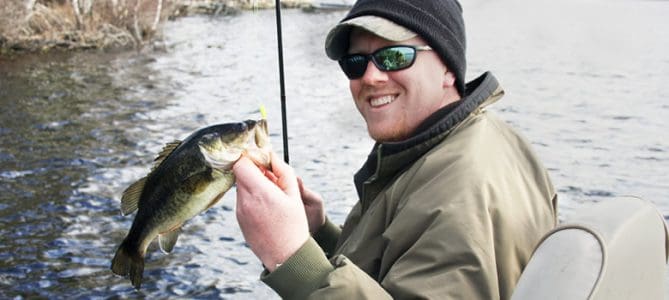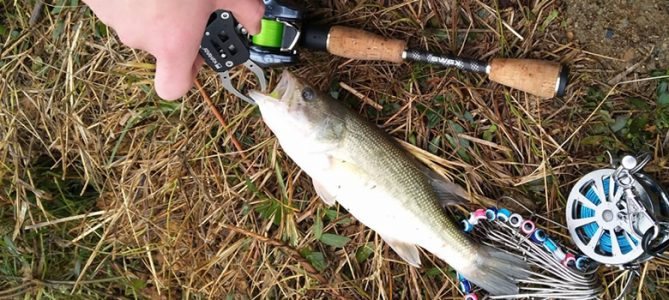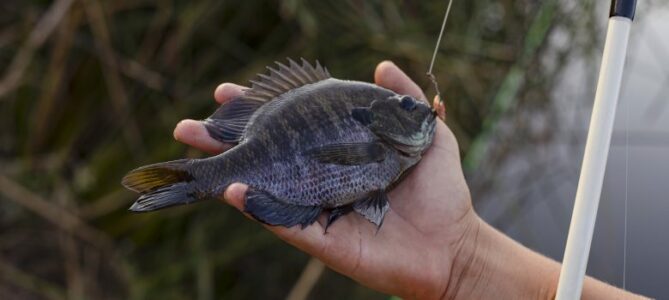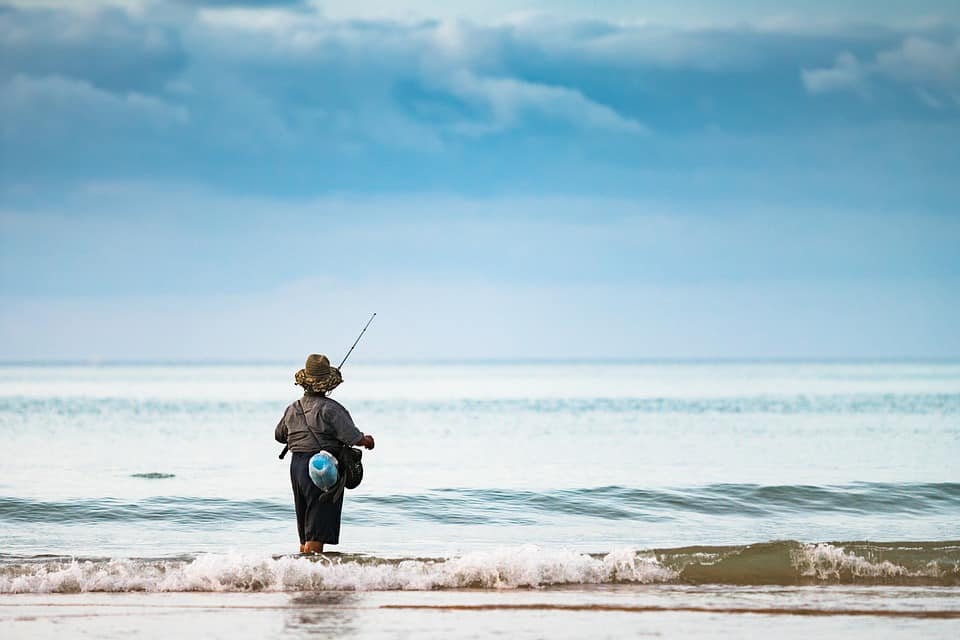If you buy via a link on this page, we may receive a commission, at no extra cost to you.Learn more
When fishing for crappie, the time of the year goes a long way to dictating your plan of attack. There is no one best month to catch crappie. Instead, there are many good months for catching crappie, and the key is knowing what strategies to use to find and hook them. Whether it’s spring, summer, or fall, each new season provides new opportunities, and that keeps crappie fishing exciting and fun.
So, what is the best of these seasons to catch crappie? As a seasoned angler, I’ve found that no matter how much experience you have, you can catch crappie no matter what month of the year it is. Yet, spring does provide the best opportunity for catching fish, especially if you’re a beginner.
In this guide to seasonal crappie fishing, you’ll find the best times to catch crappie and the most effective techniques to use. Below we’ll go over everything you need to know for catching crappie on a season-by-season basis.
Know Your Target Depth
As the seasons change, crappie moves to new water depths as they chase after their food sources. As an angler, knowing what depth the fish are at is a crucial factor if you’re going to have a successful day fishing.
How to Catch Crappie in the Spring
When the snow starts to thaw, and temperatures begin to creep back toward tolerable levels, now is the time to head out to your favorite pond. Bring a thermometer and test the water; if it’s over 50 degrees, fish are on their way.
Crappie will begin to spawn usually around March as the water approaches 55 degrees Fahrenheit. If you can time it, this is one of the most lucrative times to fish for crappie. When crappie is spawning in the spring, they tend to cluster in the shallows. This can make it almost seem like cheating and how easy it is to target and catch fish after fish.
Related Article: Best Fishing Rods for Crappie
To catch the fish, you must first find the fish, and that will be easiest with a GPS fish-finder. Stick to the shoreline, and troll back and forth with your GPS until you land on the fish. Then, drop an anchor and start planning for shore lunch. If you want, continue to cover as much water as possible to ensure that you’ve found the biggest school of fish. But I say if you find the fish, don’t let them go.
How to Catch Crappie during Summer
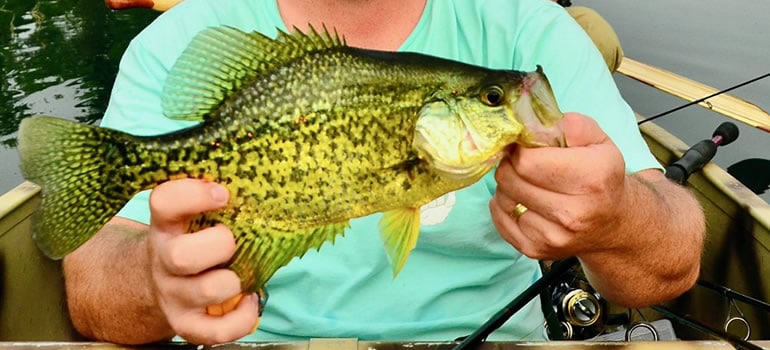
As the water gets warmer in the summer months, baitfish move, and so do the crappie. But, now the crappie is less predictable in where they’ll end up.
Try targeting areas near structures such as bridges, piers, or rock outcroppings. In the open water, start around a depth of 10 feet and work towards a depth of 20 feet. The crappie should be not too shallow, but also not too deep during the summer.
During the summer months, crappie tends to be hiding in the brush, and near piers. Search for any kind of structure where the fish could hide, and you’ll likely come across a school of crappie.
In the warmer months, the best times to fish for crappie from the shore is during twilight or during the night. This is when crappie comes back closer to the shallows.
Related Article: Best Fishing Reels for Crappie
Crappie is also found near the thermocline in the summer months. The thermocline is where warmer water meets colder water, and you can see this using your GPS. Turn the sensitivity all the way up on your GPS device. This should help you to find two contrasting bodies of water. Where the two layers of water meet are the thermocline and crappie love to hang out here.
When the fish are hiding like this, one of the best ways to get at them is by jigging. Jigging is the simple act of putting a jig on your line, a painted circular weight with a hook coming through the bottom, and “jigging” up and down. The act of jigging is bouncing your lure to attract the fish. Start on the surface and continue to shorten your line, jigging to cover the entire water column.
Jigging allows you to avoid getting caught in weeds and provides for more efficient fishing. Jigging is also useful for discovering what depth the fish are at.
How to Catch Crappie during the Fall
Much like the spring, the fall’s temperature drop makes it easy to predict where the crappie will be heading. In general, the crappie will be moving back towards the shallow waters where you can find them during the spring. In the fall months, look for crappie to be about 10 feet below the top of the water.
Fishing for crappie in the fall can be loads of fun. Not only because they can be easy to target, but the crappie that has survived this long is also going to be bigger fish. If you’ve fished for crappie all year long, the fall months are your reward for all that hard work.
How to Catch Crappie in the Winter
Fishing for crappie becomes more of a challenge in the winter months, but you can still have success if you know what you’re doing.
The first thing to know is that fishing for crappie in the winter requires a high level of patience.
While it’s cold, takes time and there are fewer fish biting, there are still many advantages to fishing for crappie in the winter. Two of the most important are: a lack of competition, and a better opportunity to haul in trophy crappie due to the lack of pressure from other anglers.
When the water is cold, the fish move slower. So, a slower retrieval can be deadly in the winter months. With less competition and the fish seeing fewer lures in the water, providing the crappie with an attainable snack is half the battle. Don’t retrieve your line so fast that the fish can’t catch up. Instead, present them with your own trojan horse, a trap to spring on the crappie when they least expect it.
Fishing for crappie in the winter is going to work out best in a warmer climate. Here the temperature of the water stays at 50 degrees Fahrenheit or higher. If the water temperature is lower, try finding a river channel coming off the lake. This is another area where you may be able to locate a thermocline, where the warmer water meets the colder water.
Related Article: Best Fishing Line for Crappie
Finding the crappie is the most challenging part of fishing for them in the winter. Yet, once you do find them, your search for the day is over. The crappie school together during cold months, and provide plenty of targets for the day.
The colder the water is, the deeper the crappie will be. The average winter depth for crappie will be between 25 feet and 40 feet. The best time of the day to target crappie in the winter will be in the afternoon when the temperature is as warm as it will is during the day.
As with the rest of the year, crappie will often be hanging out near large structures in the water. When you find a particularly attractive piece of structure, make sure to hit it from all angles. The crappie schooling together means they are hanging out close to each other in a tight space.
The Best Month to Fish for Crappie
There is no one best month for catching crappie. but the spring season provides the best opportunity to catch lots of them. This is because the fish are starting to spawn, and you’ll never have more fish in one area than in the spring. Knowing where the crappie are 75% of the battle when fishing in the spring months. Being able to target crappie up and down the shore makes it the perfect way to kick off your fishing for the year.
Final Thoughts on How to Catch Crappies All Year Long
Each season provides a new opportunity for catching crappie.
You have the best opportunity to catch crappie when the fish are spawning in the spring. The fish will be smaller during this time of the year. But knowing where they will provide you with a valuable opportunity. You not only know where the crappie will be, but you know there will be many of them.
In the summer, the fish will be more spread out. Keep in mind that the crappie is hiding near a structure, you should be able to locate them with the help of a GPS finder.
Only the most serious of anglers fish for crappie in the winter. But those who do venture out will find the biggest crappie of the year.
The most important thing to remember when fishing for crappie is the water temp. This is the number one factor in determining where the crappie are moving. Water temperature alone makes a GPS fish finder a must-have when fishing for crappie. Track the water temperature, find the thermocline, and you’ll be on the fish in no time.

